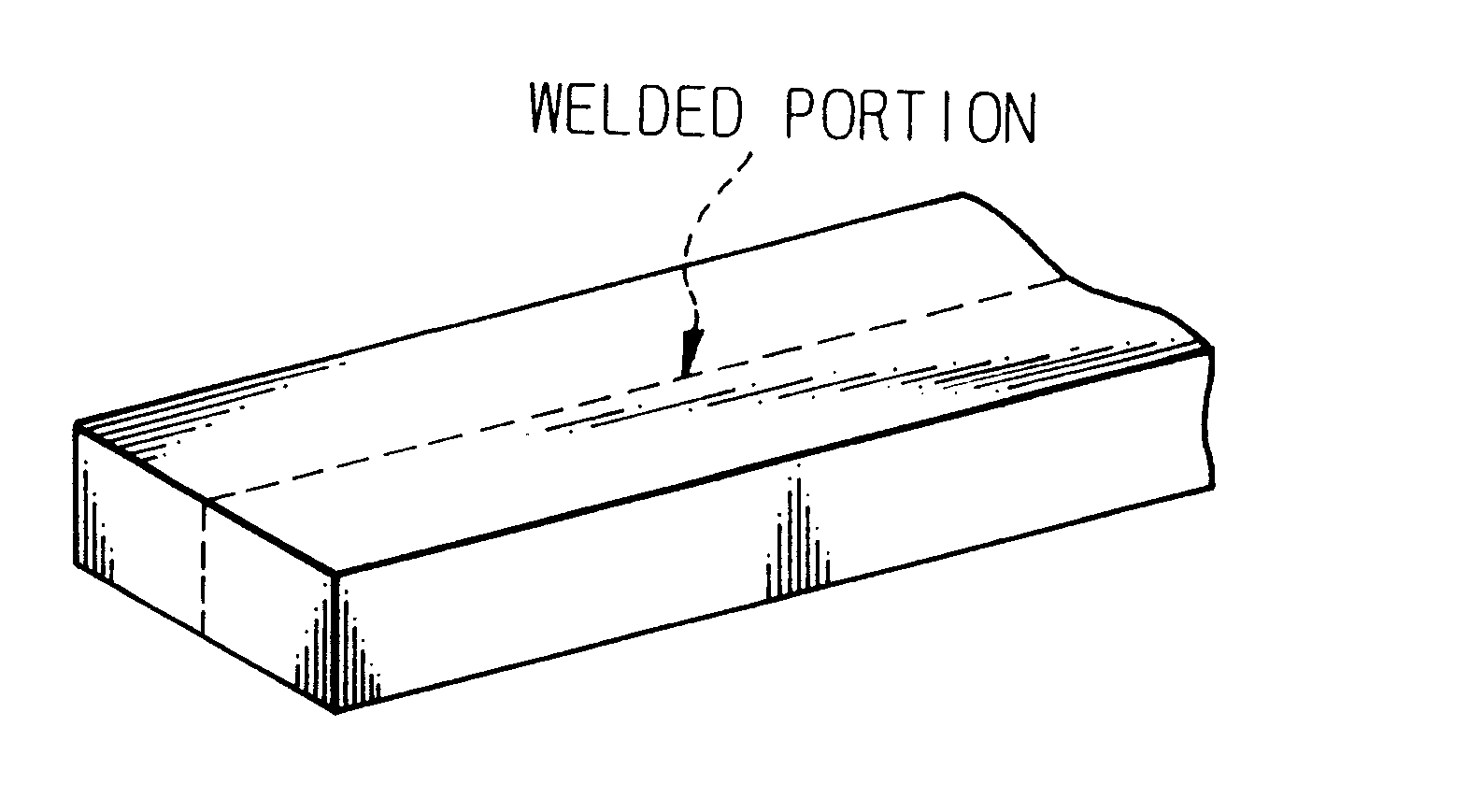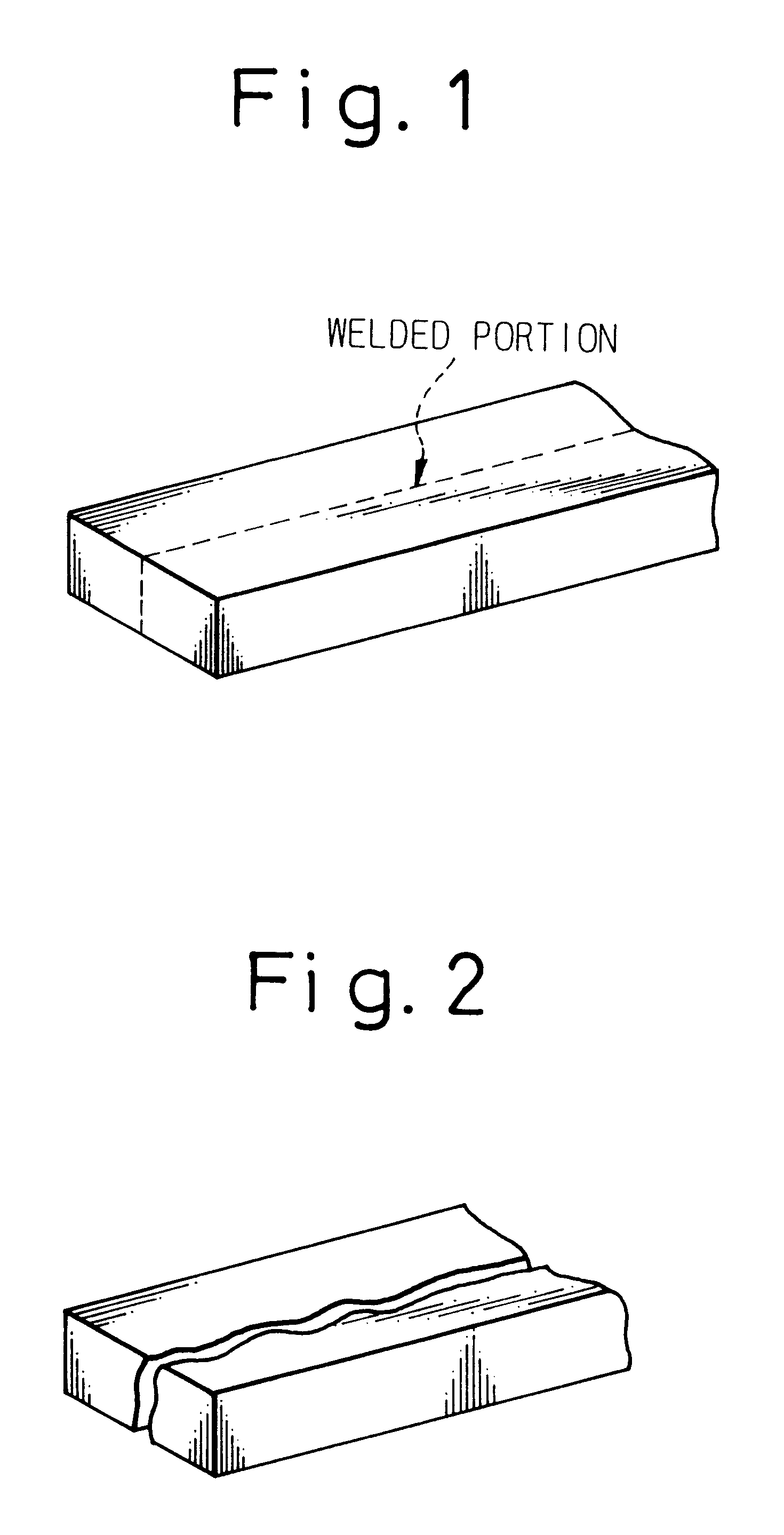Process for improving the extrudability of high-strength aluminum alloys
a technology extrudability, which is applied in the field of high-strength aluminum alloy, can solve the problems of inability to conduct porthole extrusion of jis 4000 series alloy, inability to provide sound hollow sections, and inability to meet the requirements of high-strength alloys
- Summary
- Abstract
- Description
- Claims
- Application Information
AI Technical Summary
Benefits of technology
Problems solved by technology
Method used
Image
Examples
Embodiment Construction
Aluminum alloys having compositions specified in the following Table 1 were cast by conventional DC casting into billets, having a size of 177.phi..times.L, which were cut into a length of 200 mm. The ingots were homogenized under conditions specified in Table 1 and forged to deform the ingots in the longitudinal direction, at 300.degree. C. and with a percentage upsetting of 40%, into a size of 230.phi..times.120 mm. They were then machined to prepare billets having a diameter of 97 mm and a height of 100 mm, thereby preparing test materials, with work hardening imparted thereto, for extrusion. The test materials were extruded under conditions of billet temperature 450.degree. C. and extrusion speed 2 m / min into plate materials having a thickness of 5 mm and a width of 50 mm. In this case, a die provided with a bridge portion for forming a welded portion and a reference die not provided with a bridge portion were used. Plate materials prepared using the die provided with a bridge p...
PUM
| Property | Measurement | Unit |
|---|---|---|
| temperature | aaaaa | aaaaa |
| temperature | aaaaa | aaaaa |
| length | aaaaa | aaaaa |
Abstract
Description
Claims
Application Information
 Login to View More
Login to View More - R&D
- Intellectual Property
- Life Sciences
- Materials
- Tech Scout
- Unparalleled Data Quality
- Higher Quality Content
- 60% Fewer Hallucinations
Browse by: Latest US Patents, China's latest patents, Technical Efficacy Thesaurus, Application Domain, Technology Topic, Popular Technical Reports.
© 2025 PatSnap. All rights reserved.Legal|Privacy policy|Modern Slavery Act Transparency Statement|Sitemap|About US| Contact US: help@patsnap.com


